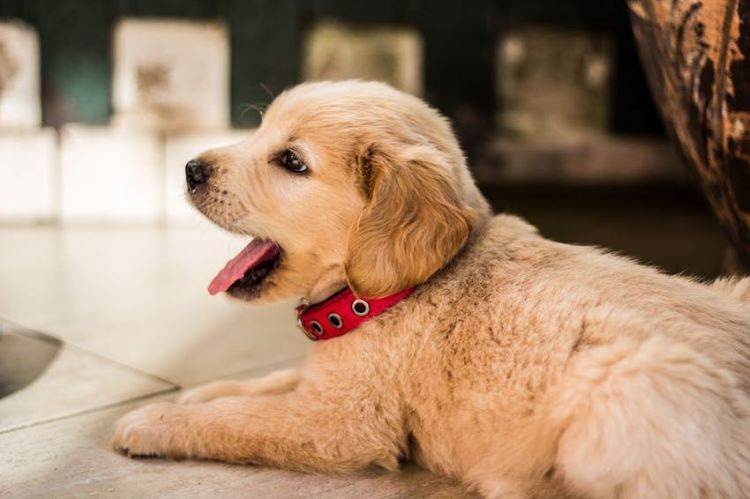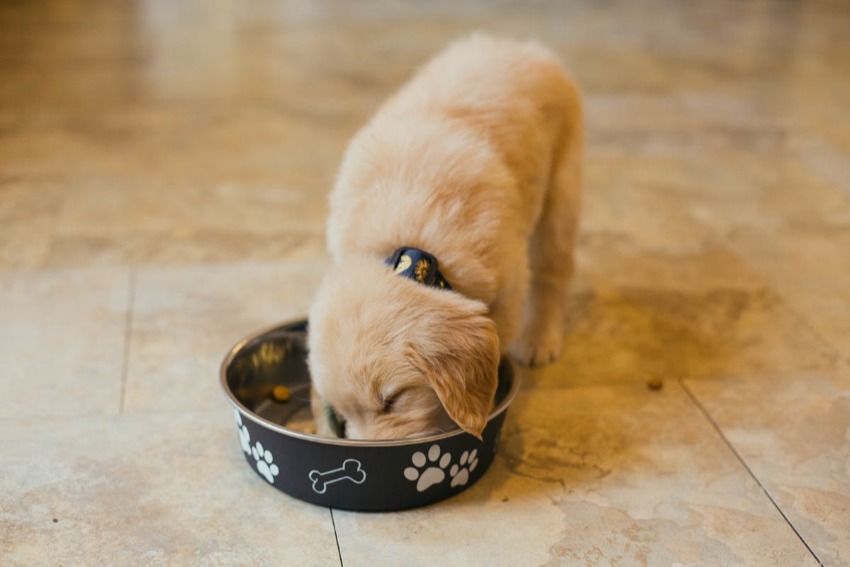Ready to help treat your pet to a healthy life?
Essential Tips for Puppy-Proofing Your Home
By : Trupanion Staff | Updated Jan 10, 2025

Did you recently adopt a new puppy or are looking to do so soon? Bringing a new puppy into your home is an exciting and joyous occasion, but it also comes with the responsibility of ensuring a safe environment for your furry companion. Puppy-proofing your home is a crucial step in welcoming your new pet and, most importantly, helping keep them safe and healthy for years to come.
Ideally, puppy-proofing your home should be done before you bring your new pal into their living space. But if you're reading this with your new puppy already at home, don't panic — any puppy-proofing steps are better late than never. That said, it is a good idea to keep your pet limited to where they can roam while you work to ensure every room is properly equipped to keep a young and curious pet out of trouble.
There's a lot to do when it comes to puppy-proofing, and it's normal to feel a bit overwhelmed at the thought of it. But don't worry — the pet experts at Trupanion have your back! We'll go over just how essential puppy-proofing is as well as cover important tips that can help guide you in the process. Let's go!
Why puppy-proofing is important
Puppies, known for their boundless curiosity and energy, often explore their surroundings with an innate desire to chew on everything in sight. To safeguard your puppy from potential hazards and create a secure haven, it's essential to identify and address potential dangers in every corner of your living space. From securing loose wires and cables to removing small items that could be swallowed, each room demands a thoughtful approach. Additionally, outdoor spaces require careful consideration, ensuring a fenced and hazard-free area for your puppy to play.
By investing time in puppy-proofing measures, you not only protect your new companion but also lay the foundation for a harmonious and enjoyable relationship, allowing both you and your puppy to thrive in a safe and loving home environment.
While you're making a game plan to puppy-proof your space, it's a good idea to take a few minutes to look at your pet insurance options. The truth is that even the most puppy-friendly homes cannot guarantee that nothing bad will ever happen to your pet. In the event of unexpected accidents and surprise health conditions, a good pet medical insurance policy helps ensure you can say 'yes' to the veterinary care your pup needs to get better.

Puppy-proofing 101: a guide
Think of young puppies like newborn babies — they are dependent on us for care and survival. As they grow into adult dogs, they need careful supervision and behavioral management to keep them safe and healthy. Our guidance also helps prevent bad habits from developing. When getting started with puppy-proofing, it's best not to tackle your whole house or apartment at once. After all, your new puppy shouldn’t be free-roaming in your home right away. So, consider which rooms you need to puppy-proof first and think about the unique pet dangers that may be within each space.
Get into a puppy state of mind!
Channel your inner puppy: look around the room from their perspective. Get down on all fours if it helps, and look for things that could be easily yanked on or pulled. Specifically, look for any dangers that you wouldn’t have noticed standing on two legs or would not have considered a hazard to the average human.
Your world is up for grabs. Puppies explore the world with their mouths — taste it, eat it (and when they’re done, maybe even pee on it!) If you don’t want your puppy’s mouth on something, put it away or make it inaccessible. Shoes by the door, kid toys, and your favorite handbag will end up “belonging” to your puppy if they can reach them. When in doubt, remove access.
Common hazards checklist
Your home may have some unique puppy dangers depending on the layout and your lifestyle. That said, here's a list of common puppy home hazards to puppy-proof against:
- Trash cans & recycle bins: Cover and store in closets or inaccessible rooms.
- Electrical cords, chargers & power cables: Use cord covers to prevent accidental burns or shocks. Keep cords organized so your puppy can’t get tangled up in them.
- Bags, backpacks & coats: Store in closets or on hooks out of puppy’s reach. Regularly check pockets for potential dangers (such as gum or candies containing xylitol, an ingredient highly toxic to dogs).
- Batteries & battery-powered devices: Remote controls, electronics, key fobs, hearing aids, and more can be dangerous if eaten. Batteries can cause internal burns very quickly.
- Refrigerator magnets: Keep high enough that your puppy can’t grab them, and make sure they can’t easily fall off. Why? If two magnets stick together after being eaten, they can cause severe damage to the intestines.
- Medications: Store in a secure cabinet or drawer. Always dispense pills or liquids over a sink in case of spills. Separate and try color-coding pet meds to distinguish them from human meds.
- Plants: Do your research! Know if yours are poisonous. Many common houseplants like sago palms are very toxic.
- Household poisons: Safety caps don’t stand a chance against a determined puppy. Glues, cleaners, detergents, yard and automotive chemicals, bug bait, and rodent poisons are just a few dangers. Store these items up and out of reach.
- High places: Puppies aren’t afraid of heights, but they should be. Their bones are fragile and jumping off a couch or bed could result in serious injury. Limit access to these comfy spots.
Human food isn't dog food
The kitchen is often a particularly dangerous area for young pets, and extra puppy-proofing considerations need to be made here. If you're accustomed to leaving food out on tables and countertops, for example, it's time to rethink things. Puppies can be surprisingly agile and determined if they want to get at something, and they only become more capable as they grow bigger.
Follow these quick tips to ensure all food in the home is not a danger to puppies:
- Never leave food out unsupervised.
- Avoid feeding puppies "table scraps" or any food from your plate — doing so only reinforces begging and can make dogs more likely to think human food is their food.
- Ensure your refrigerator shuts securely and can't be opened by prying paws (you may want to invest in a dog-proof fridge lock if it opens easily).*
- Store all non-refrigerated food high up and out of reach, in resealable (preferably with latches) containers.
Keep all family members on the same page
Puppy-proofing only works if every person in your household is dedicated to it. Whether you live with roommates or have family members under your roof, it's important to have a meeting to go over the ground rules of having a puppy in the home. Consider creating a list to hang up somewhere everyone can see, just in case anyone forgets what you discussed.
Keep in mind that even younger children will need to know what is and isn't okay with your puppy, and they may not get things right the first time. This is why it's important to not leave your new pet alone with children, even if everyone seems calm and safe. Reinforce that all toys need to be put away when not in use and that your pet should only be allowed to have their own puppy-safe toys.

Keep your home safe for dogs
As your puppy grows up and becomes more secure in their obedience skills and navigating around the home on their own, it can be all too easy to let things slide. But contrary to what the "puppy" verbiage suggests, puppy-proofing is something that should be kept up all through puppyhood and well into your pet's life as an adult canine. Dogs of all ages can get into things they shouldn't. To avoid unpleasant accidents, keep anything dangerous to your pet well out of reach, and consider signing up for dog insurance if you haven't already.
Feeling comfortable with puppy-proofing your home? Avoid these 10 new puppy owner mistakes to make sure you're setting your furry friend up for success.
*Trupanion does not receive compensation for any products that are mentioned in this article. Linked products are for informative purposes only.
